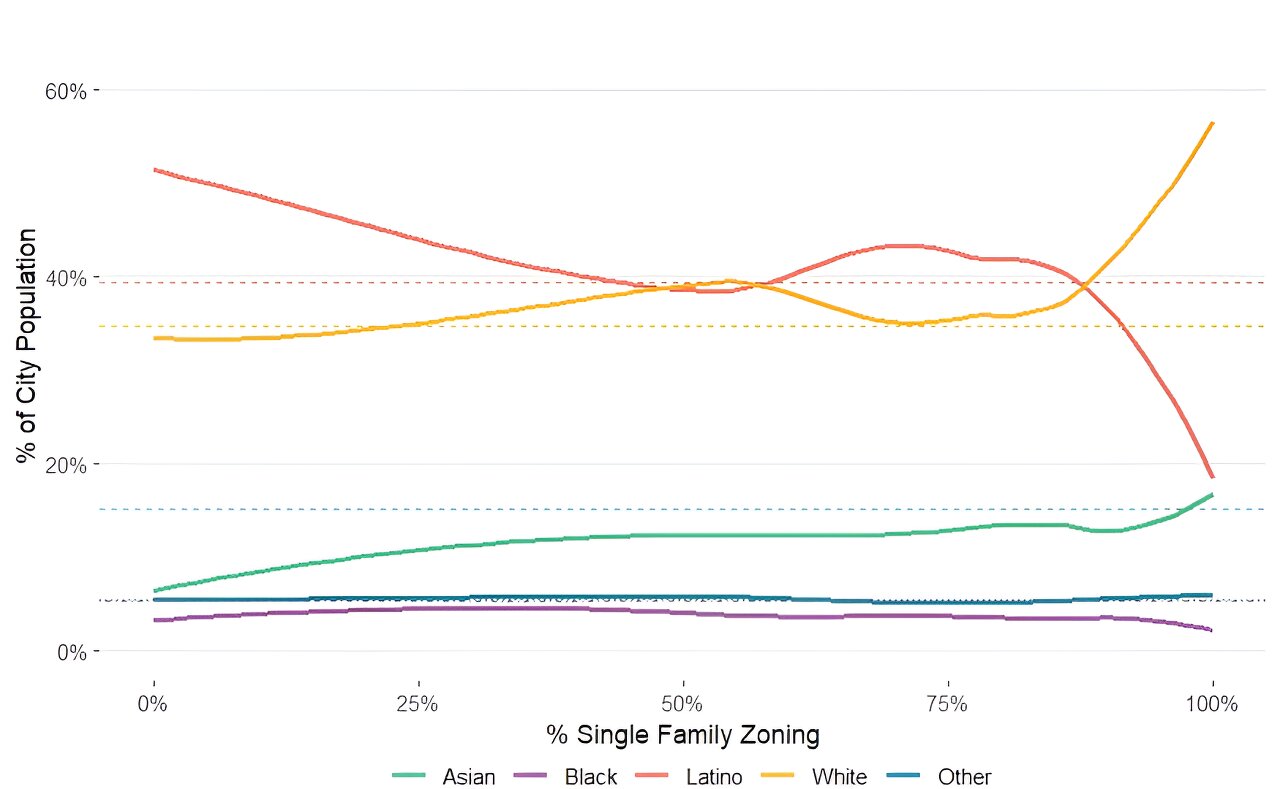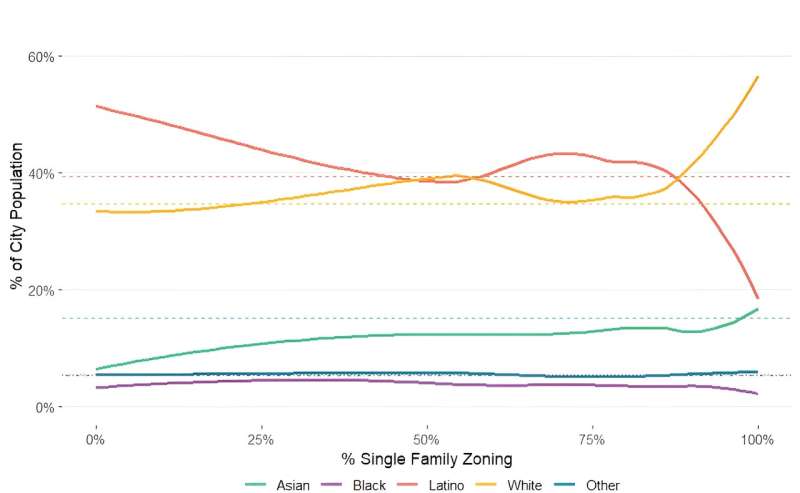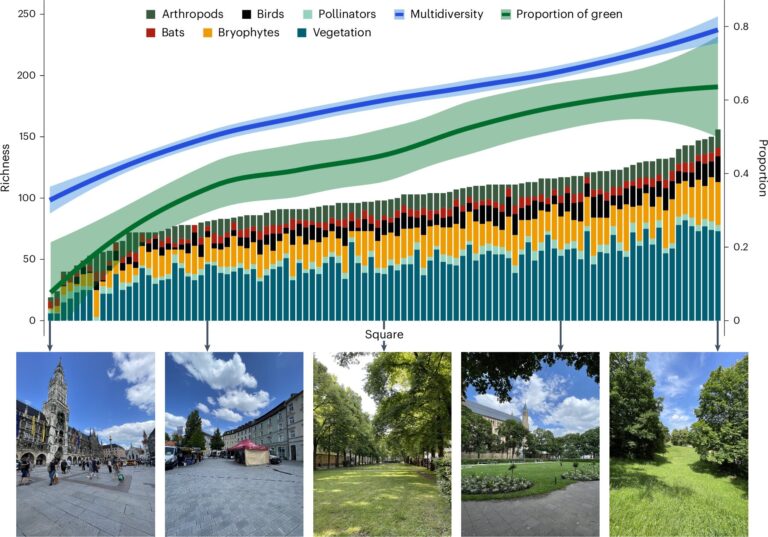

A stunning 95.8% of all residential land in California is reserved for single-family housing, effectively barring denser housing options in those areas and creating an obstacle to racial and economic equality in the state, a new study released Wednesday from UC Berkeley’s Othering & Belonging Institute shows.
That figure includes both incorporated and unincorporated regions of the state. When unincorporated regions (which include large swathes of sparsely populated land) are removed from the calculation, the figure drops to 82%, which is still an overwhelming percentage for a state suffering from housing shortages and many related crises.
In findings that mirrored the center’s past research on different regions of California, the statewide report shows that as single-family zoning increases, so does its white population, while its Latino population sharply decreases.
On average, white residents make up about 39 of the population in neighborhoods that are zoned at 87 for single-family housing, while in areas that are entirely zoned for single-family homes the percentage of white residents jumps to over 55.
For reference, Latinos make up a plurality of Californians at roughly 39 of the population, with white at 35, Asian at 15, Black at 5, and Native at 0.74.
This is the first study to analyze single-family zoning in California as a whole. It maps the zoning of every jurisdiction in the state, covering 473 municipalities and 46 unincorporated jurisdictions across California’s 58 counties.
As with OBI’s regional research on exclusionary zoning, this statewide report shows correlations between zoning and educational attainment, wealth creation, education, and exposure to pollutants.
Neighborhoods with less restrictive zoning in California are more diverse, but contain greater exposure to pollutants, slower wealth creation, and poorer educational outcomes. The report contains several graphs clearly showing a relationship between zoning and household income, fourth grade reading and math proficiency, high school graduation rates, attaining university degrees, exposure to lead, and several other life outcomes.
For instance, one graph shows that fourth grade reading proficiency is 7 points higher in jurisdictions where single-family zoning is at least 88 versus those where single-family zoning is 66 and under (55 reading proficiency vs. 48 reading proficiency, respectively).
Another graph similarly shows a 7 point gap for fourth grade math proficiency by jurisdictions on the opposite ends of the zoning spectrum (51 vs. 44). And the gap is 6 points for SAT benchmarks (50 vs. 44).
The report identifies 45 cities across the state it found to be strong candidates for zoning reform in the pursuit of closing the equity gaps listed above. Those cities include Bradbury and La Habra Heights (in the Los Angeles region), Orinda, Clayton, and Danville (in the San Francisco Bay Area), and Encinitas (in the San Diego region), among the dozens of others.
The criteria used to identify these cities included their levels of restrictive zoning, their proximity to job centers, and others.
More information:
Single-Family Zoning in California: A Statewide Analysis. belonging.berkeley.edu/single- … a-statewide-analysis
Provided by
University of California – Berkeley
Citation:
A staggering 96% of California residential land is zoned for single-family housing, study finds (2024, May 31)
retrieved 1 June 2024
from https://phys.org/news/2024-05-staggering-california-residential-zoned-family.html
This document is subject to copyright. Apart from any fair dealing for the purpose of private study or research, no
part may be reproduced without the written permission. The content is provided for information purposes only.





